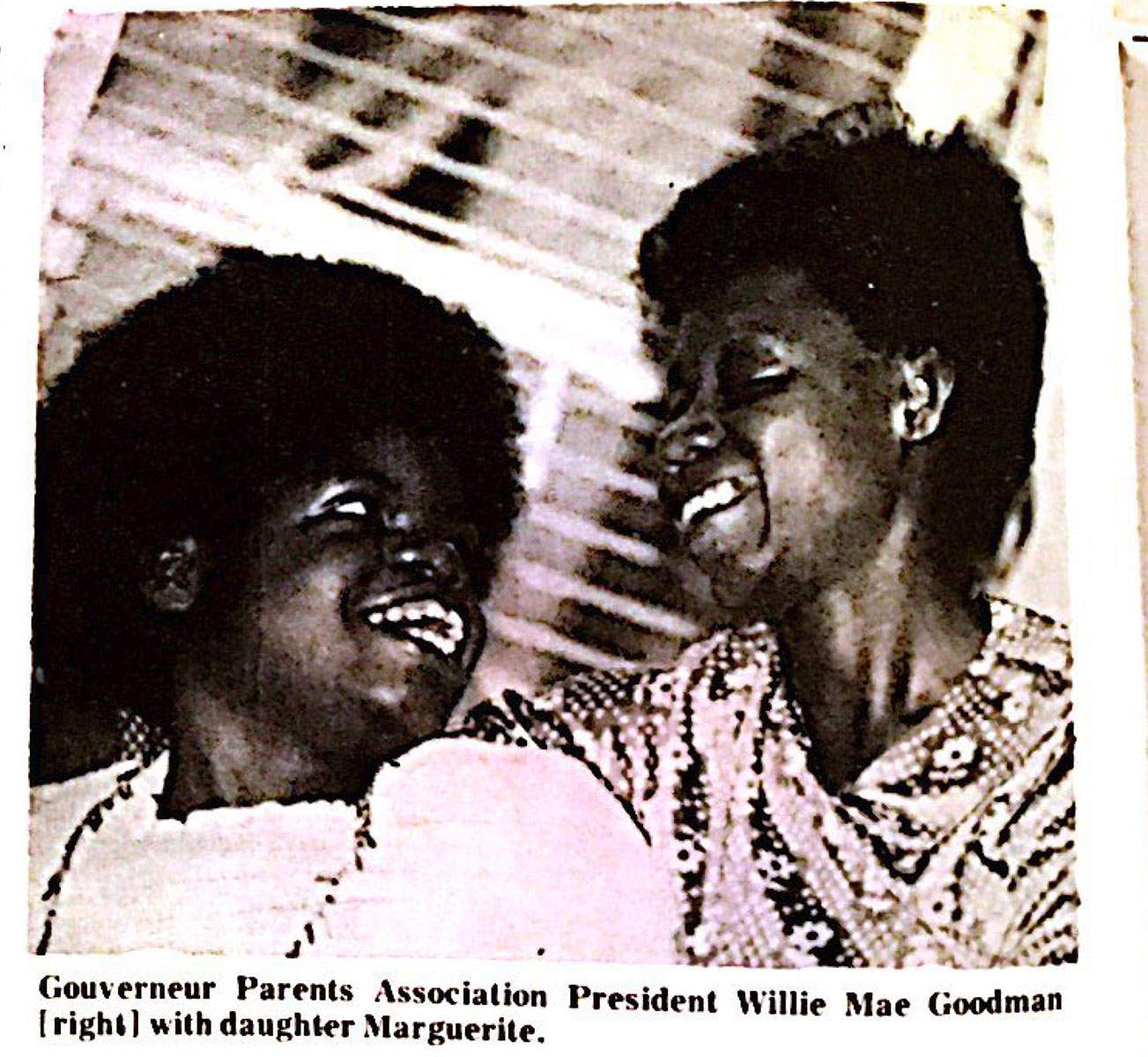Willie Mae Goodman and Marguerite Goodman

Date: undated
Caption: Willie Mae Goodman and her daughter Marguerite Goodman were photographed together.

Mrs. Willie Mae Goodman heard many people speak of her daughter’s death. When she was an infant and a toddler, doctors encouraged Mrs. Goodman and her husband to place Marguerite in an institution. Her doctors predicted that Marguerite would not live beyond two years, and they told her parents that they could send her away.
By the time Marguerite was four years old, Mr. and Mrs. Goodman decided to take the doctor’s suggestions and place her in an institution. They sent her to Willowbrook State School. Mrs. Goodman had hoped that Marguerite would learn to walk at Willowbrook, and then she would come home. She wanted her daughter to learn to talk, to be able to tell her mother her needs. She did not. Willowbrook was far from the warm home or the caring school that Marguerite, like any child, deserved. The facilities at Willowbrook worried Mrs. Goodman. They were overcrowded and unsafe, a space that Senator Robert Kennedy, when he visited, described as “not fit for animals to live.”
Due to overcrowding, many children, including Marguerite Goodman, were moved out of Willowbrook. They were sent to the Gouverneur Annex in lower Manhattan.
Why did they move Marguerite? Willowbrook officials chose children who they predicted would not live very long. In a grim calculation, they thought they could make Willowbrook less crowded by removing patients who would not live long enough to return. Mrs. Goodman noted that the officials at Willowbrook and Gouveneur “wanted to pick when [children like Marguerite] were going to die, not when they were going to live.”1
Mrs. Goodman pushed for decent care and education for Marguerite at Gouverneur for decades. She fought by filing court cases, and by demanding more humane practices at the facility. She founded the Gouverneur Parents’ Association.2 She focused on Marguerite’s life, when so many others had been planning for her death.
Today, both Willowbrook and Gouverneur are closed. Marguerite lives close to her mother in East Harlem. She is more than 65 years old.
-
For more on Goodman’s activism and that of others at Willowbrook, see Jorgé Matos Valldejuli, “The Racialized History of Disability Activism from ‘The Willowbrooks of this World,’” accessed June 17, 2024, https://activisthistory.com/2019/11/04/the-racialized-history-of-disability-activism-from-the-willowbrooks-of-this-world1/. ↩︎
Categories: Manhattan, Queens, Bronx, community activism
Tags: racist segregation, institutionalization of Disabled people and people labeled disabled, Disabled people, intellectual disabilities, physical disabilities, Black people, social and economic class, women's activism, photography, imagery, and visual representation, exclusion from schooling
This item is part of "Willie Mae Goodman fighting Willowbrook" in "Black and Latina Women’s Educational Activism"
Item Details
Date: undated
Source: New York State Office for People with Developmental Disabilities
Copyright: Under copyright. Used with permission.
How to cite: “Willie Mae Goodman and Marguerite Goodman,” in New York City Civil Rights History Project, Accessed: [Month Day, Year], https://nyccivilrightshistory.org/gallery/willie-mae-and-marguerite-goodman.
Questions to Consider
- What emotions do you see captured in this photograph? How do those emotions relate to the story of Willie Mae Goodman and Marguerite Goodman shared here?
- How is this representation of a Black woman activist similar to or different from others in this teaching collection - including the photographs of Elizabeth Cisco, Mae Mallory and her daughter Patricia, and Denise Oliver?
References
How to Print this Page
- Press Ctrl + P or Cmd + P to open the print dialogue window.
- Under settings, choose "display headers and footers" if you want to print page numbers and the web address.
- Embedded PDF files will not print as part of the page. For best printing results, download the PDF and print from Adobe Reader or Preview.
